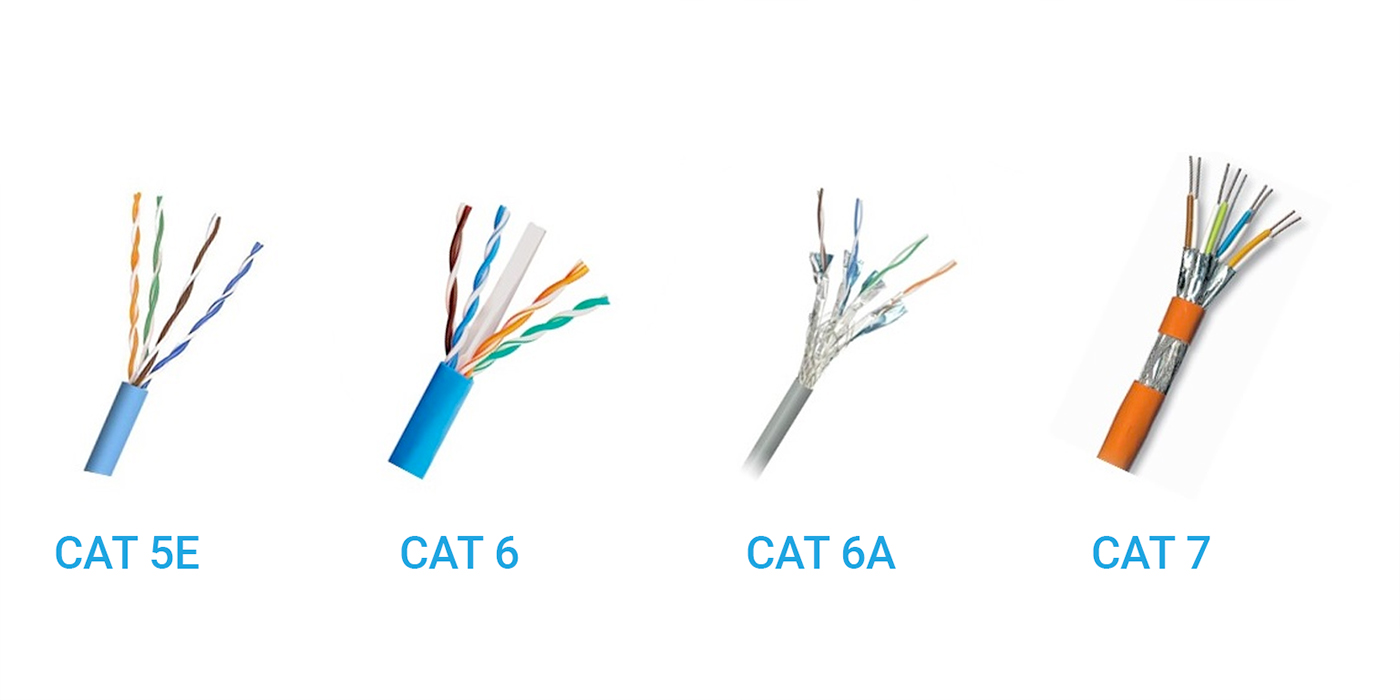
How to Choose the Right Ethernet Cable for Your Home Network
As the demand for high-speed, reliable home networks continues to grow, choosing the right ethernet cable becomes an essential decision. With options such as Cat5e, Cat6, Cat6a, and Cat7 cables, it can be overwhelming to determine which one is best for your home network. This guide, brought to you by YesTechie - Home Network Experts, will help you make an informed decision.
Understanding the Different Ethernet Cable Categories
Before diving into the specifics of each cable category, it's essential to understand their core differences. Ethernet cables are categorized based on their performance, data transmission speeds, and frequency range. Let's take a closer look at the most commonly used categories.
Cat5e Ethernet Cable
Category 5e (Cat5e) cables are an improved version of the older Cat5 standard. They are designed to support data speeds of up to 1 Gbps over distances of up to 100 meters. Cat5e cables are the most affordable option and are suitable for basic home networking requirements.
Cat6 Ethernet Cable
Category 6 (Cat6) cables offer higher data transmission speeds of up to 10 Gbps over shorter distances (up to 55 meters). These cables feature better insulation and crosstalk prevention, making them more suitable for high-speed home networks or small business setups.
Cat6a Ethernet Cable
Category 6a (Cat6a) cables are an advanced version of the Cat6 standard, offering data speeds of up to 10 Gbps over distances of up to 100 meters. These cables provide better performance and are ideal for more demanding home networks, such as those with multiple high-bandwidth devices or streaming services.
Cat7 Ethernet Cable
Category 7 (Cat7) cables are designed to support data speeds of up to 10 Gbps over distances of up to 100 meters, similar to Cat6a cables. However, Cat7 cables offer improved shielding and reduced interference, making them an excellent choice for high-performance networks with multiple devices and advanced networking equipment.
Factors to Consider When Choosing an Ethernet Cable
When selecting the right ethernet cable for your home network, consider the following factors:
1. Network Speed Requirements
Consider the speed requirements of your home network. If you only need basic internet connectivity, a Cat5e cable will suffice. However, for more demanding networks with multiple devices, streaming services, or gaming, opt for Cat6, Cat6a, or Cat7 cables.
2. Cable Length
The length of the ethernet cable impacts its performance. For longer cable runs, consider using Cat6a or Cat7 cables to maintain high-speed connectivity over greater distances.
3. Compatibility with Networking Equipment
Ensure that your networking equipment, such as routers, switches, and modems, supports the ethernet cable category you choose. It's essential to match the cable category with the equipment to achieve the desired network performance.
4. Budget
Ethernet cables vary in price depending on their performance and quality. While Cat5e cables are the most affordable, they may not provide the best performance for demanding networks. Consider the balance between cost and performance when choosing a cable category.
5. Future-Proofing Your Network
When investing in your home network, it's essential to consider future upgrades and compatibility. Opting for a higher category cable, such as Cat6a or Cat7, can help ensure your network is prepared for future bandwidth demands and technological advancements.
Ethernet Cable Comparison Table
| Cable Category | Maximum Data Rate | Maximum Frequency | Shielding | Application |
|---|---|---|---|---|
| Cat5e | 1 Gbps | 100 MHz | Unshielded (UTP) | Basic home networks, small offices |
| Cat6 | 10 Gbps (up to 55 meters) | 250 MHz | Unshielded (UTP) or Shielded (STP) | Home networks, small to medium offices, gaming |
| Cat6a | 10 Gbps (up to 100 meters) | 500 MHz | Shielded (S/FTP) | Large home networks, medium to large offices, data centers, high-speed gaming |
| Cat7 | 10 Gbps+ | 600 MHz | Shielded (S/FTP) | Large offices, data centers, high-speed gaming, future-proofing |
YesTechie - Home Network Experts
Choosing the right ethernet cable for your home network can significantly impact its performance and reliability. Trust YesTechie - Los Angeles Home Network Experts to help you make the best decision for your specific needs. Our experienced professionals can assess your network requirements and recommend the ideal ethernet cable for a seamless and high-performing home network experience.
FAQs
1. What is the main difference between Cat5e, Cat6, Cat6a, and Cat7 cables?
The main differences between these cable categories are their data transmission speeds, frequency range, and insulation. Cat5e cables offer basic performance, while Cat6, Cat6a, and Cat7 cables provide higher speeds and better insulation for more demanding networks.
2. Can I mix different ethernet cable categories in my home network?
Yes, you can mix different ethernet cable categories in your home network. However, the overall network performance will be limited by the lowest performing cable category in the setup.
3. Is it worth upgrading from Cat5e to Cat6, Cat6a, or Cat7 cables?
If your home network requires higher data speeds or you plan to future-proof your network, upgrading to Cat6, Cat6a, or Cat7 cables can be beneficial. These cables offer improved performance, better insulation, and reduced interference compared to Cat5e cables.
4. How do I know which ethernet cable category is right for my home network?
Consider your network speed requirements, cable length, compatibility with networking equipment, budget, and future-proofing needs when selecting an ethernet cable category. Consult with YesTechie - Home Network Experts for personalized advice and recommendations based on your specific home network requirements.


